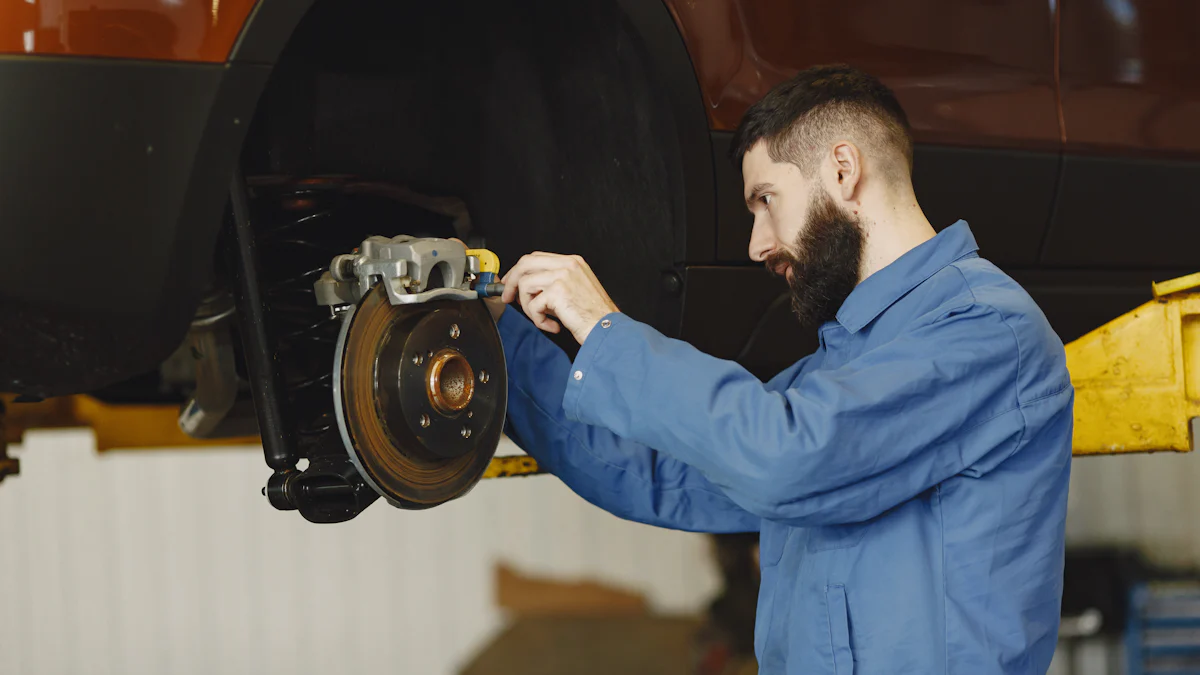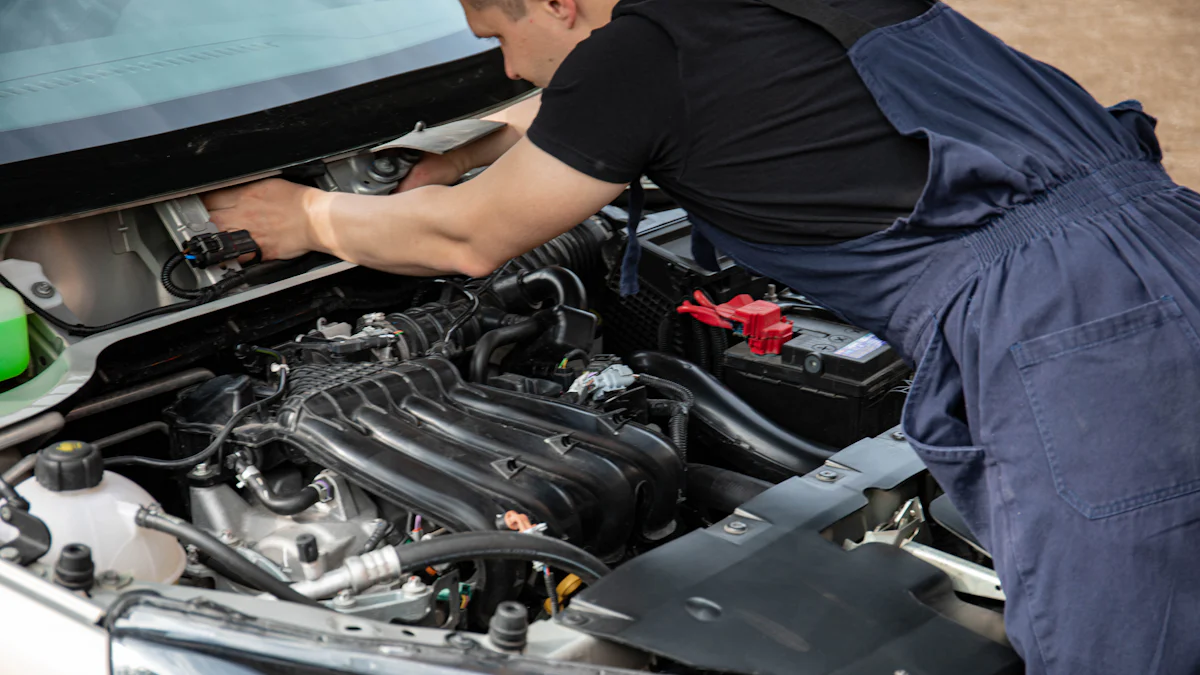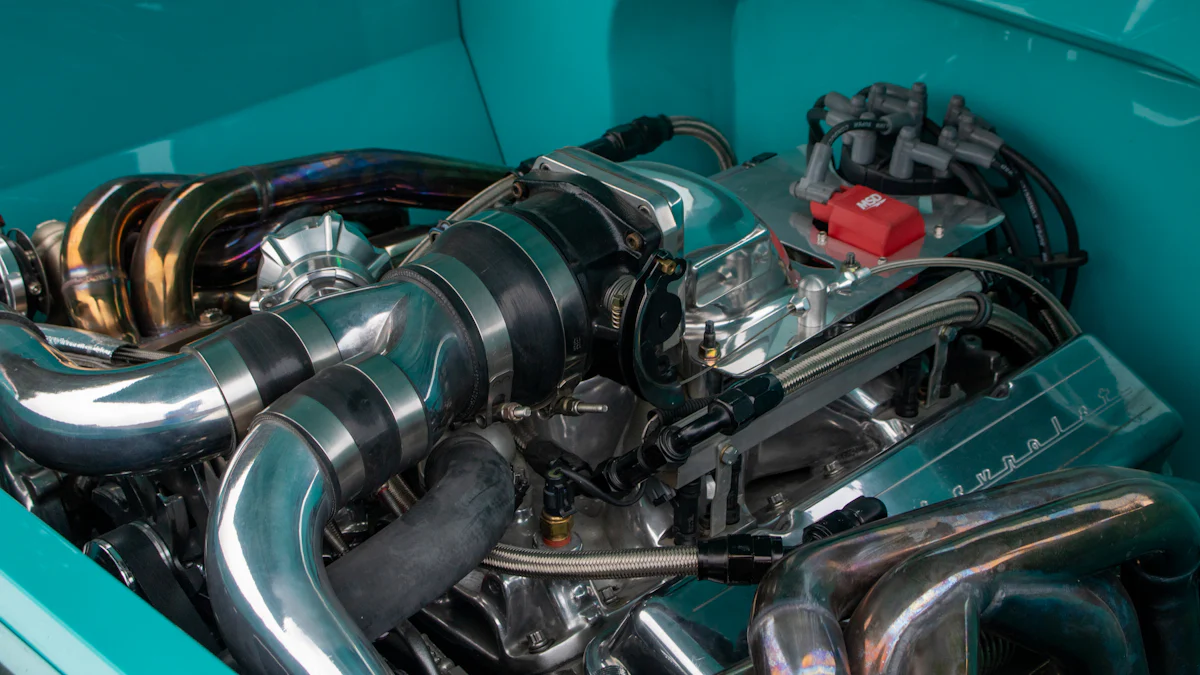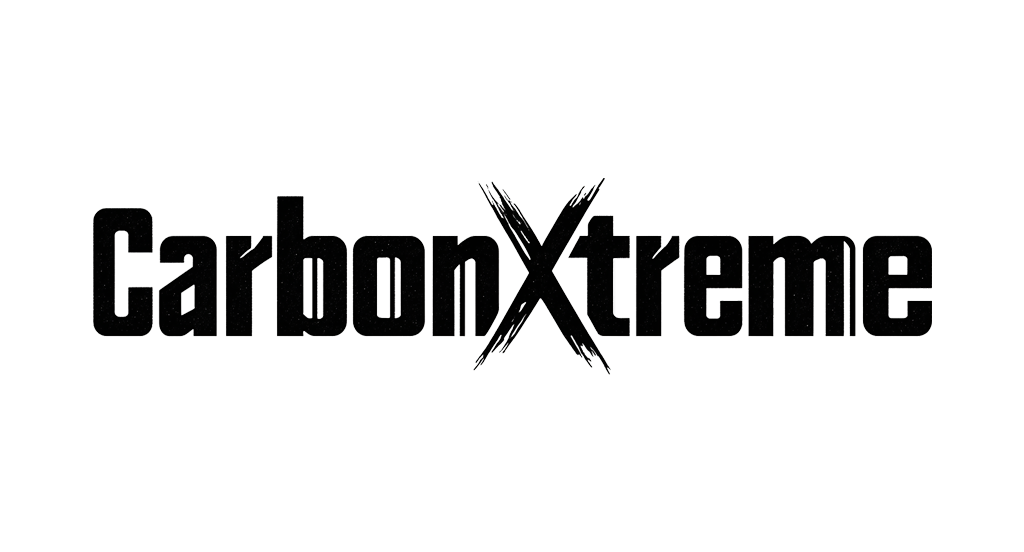Cómo mantener los componentes delanteros de su Tesla S en perfecto estado

Keeping your Tesla S front components in top shape isn’t just about aesthetics—it’s about safety, performance, and saving money. Your driving habits play a huge role in how well these parts hold up over time. Regular maintenance helps you avoid costly repairs, ensures smooth handling, and keeps your car running efficiently. Did you know Tesla vehicles have a lower chance of needing major repairs compared to traditional cars? By staying proactive, you’ll enjoy a safer ride and extend your vehicle’s lifespan.
Principales conclusiones
Regular maintenance of your Tesla Model S front components enhances safety and performance, ensuring a smoother driving experience.
Routine checks on tires, brakes, and suspension can prevent costly repairs and extend the lifespan of your vehicle.
Pay attention to warning signs like unusual noises or vibrations, as they can indicate underlying issues that need immediate attention.
Use genuine Tesla parts for repairs to maintain compatibility and performance, ensuring your vehicle operates at its best.
Implement simple cleaning and protective measures, such as using UV-resistant coatings and appropriate cleaning products, to preserve your car’s appearance and functionality.
Follow Tesla’s recommended service schedule to catch potential problems early and keep your vehicle running smoothly.
Stay proactive with maintenance; addressing small issues now can save you time, money, and stress in the long run.
Understanding Tesla S Front Components

Understanding the front components of your Tesla Model S is key to keeping your car in excellent condition. These parts work together to ensure safety, smooth handling, and overall performance. Let’s break down the essential components and why maintaining them matters.
Key Front Components
Front suspension system
The front suspension system absorbs shocks and keeps your ride smooth. It connects the wheels to the car’s frame, ensuring stability and control. If you notice unusual vibrations or uneven handling, it might be time to inspect this system.
Tires and wheels
Your tires and wheels directly impact how your Tesla Model S handles the road. Proper tire pressure and tread depth are crucial for grip and safety. Regularly rotating and balancing your tires can prevent uneven wear and extend their lifespan.
Braking system
The braking system is vital for your safety. It includes brake pads, rotors, and fluid. Worn-out pads or low brake fluid can reduce braking efficiency. Inspect these components regularly to avoid potential hazards.
Sensors and cooling systems
Tesla S front components include advanced sensors that assist with features like autopilot and collision avoidance. The cooling system prevents overheating, especially during long drives. Keeping these systems clean and functional ensures optimal performance.
Importance of Maintenance
Safety and performance benefits
Regular maintenance keeps your Tesla Model S safe and reliable. Well-maintained brakes, tires, and suspension improve handling and reduce the risk of accidents. You’ll feel more confident behind the wheel when everything works as it should.
Preventing costly repairs
Ignoring small issues can lead to expensive repairs later. For example, neglecting tire rotation might cause uneven wear, forcing you to replace them sooner. Routine checks save you money in the long run.
Enhancing vehicle longevity
Consistent vehicle maintenance extends the life of your Tesla Model S. Taking care of the front components ensures they perform well for years. A well-maintained car retains its value and provides a better driving experience.
“An ounce of prevention is worth a pound of cure.” This saying holds true for vehicle maintenance. Staying proactive with your Tesla S front components will save you time, money, and stress.
Routine Maintenance Tips for Tesla Model S
Taking care of your Tesla Model S doesn’t have to be overwhelming. With a few simple steps, you can keep your car running smoothly and avoid unnecessary expenses. Let’s dive into some practical tips for maintaining the front components of your vehicle.
Tire Care and Inspection
Your tires are the foundation of your Tesla Model S. Proper care ensures safety, better handling, and longer tire life.
Checking tire pressure and tread depth
Always check your tire pressure regularly. Underinflated or overinflated tires can affect your car’s handling and wear out faster. Use a reliable tire pressure gauge to ensure the levels match Tesla’s recommendations. Don’t forget to inspect the tread depth. Worn-out treads reduce grip, especially on wet roads, increasing the risk of accidents.
Rotating and aligning tires
Tire rotation is essential for even wear. Uneven wear can shorten the lifespan of your tires and impact performance. Rotate your tires every 6,000 to 8,000 miles or as recommended by Tesla. Alignment is equally important. Misaligned tires can cause your car to pull to one side, making driving less enjoyable and safe.
Balancing wheels for smooth handling
Unbalanced wheels can lead to vibrations while driving. This not only affects comfort but also puts stress on the suspension system. Have your wheels balanced during tire rotation or whenever you notice unusual vibrations.
Brake System Maintenance
Your braking system is critical for safety. Regular checks can prevent costly repairs and ensure your Tesla S front components perform at their best.
Inspecting brake pads and rotors
Brake pads and rotors wear down over time. Inspect them periodically to ensure they’re in good condition. If you hear squealing or grinding noises, it’s time to replace them. Neglecting this can lead to reduced braking efficiency and potential hazards.
Monitoring and replacing brake fluid
Brake fluid plays a vital role in transferring force from the pedal to the brakes. Over time, it can absorb moisture, reducing its effectiveness. Tesla recommends replacing brake fluid every two years. Keeping it fresh ensures your brakes respond quickly when needed.
Identifying signs of brake wear
Pay attention to warning signs like a spongy brake pedal, longer stopping distances, or dashboard alerts. Address these issues promptly to avoid further damage and maintain your car’s safety.
Suspension System Maintenance
The suspension system keeps your ride smooth and stable. Regular maintenance ensures it performs optimally.
Checking for unusual noises or vibrations
Listen for clunking or squeaking sounds when driving over bumps. These noises could indicate worn suspension components. Vibrations in the steering wheel might also signal an issue with the suspension.
Inspecting air suspension (if equipped)
If your Tesla Model S has air suspension, check it for leaks or malfunctions. The air suspension system adjusts the ride height for better handling and comfort. A faulty system can affect your car’s performance and stability.
Replacing worn suspension components
Worn-out suspension parts, like bushings or shocks, can compromise your car’s handling. Replace them as needed to maintain a smooth and safe driving experience.
Consejo profesional: Tesla’s maintenance recommendations are designed to maximize performance and longevity. Following these guidelines can save you money and keep your Tesla S front components in top shape.
Cleaning and Protecting Tesla S Front Components

Keeping your Tesla Model S front components clean and protected not only enhances its appearance but also ensures optimal performance. Dirt, debris, and environmental factors can take a toll on your car if left unchecked. Let’s explore some effective cleaning techniques and protective measures to keep your Tesla looking and functioning like new.
Técnicas de limpieza
Using appropriate cleaning products for wheels and tires
Your Tesla deserves special care, especially when it comes to cleaning its wheels and tires. Always use Tesla-approved or pH-balanced cleaning products to avoid damaging the materials. Harsh chemicals can strip away protective coatings or cause discoloration. A soft-bristle brush works wonders for scrubbing away grime without scratching the surface.
Removing brake dust and debris
Brake dust can accumulate quickly on your wheels and nearby components. If left unattended, it can corrode the surface over time. Use a microfiber cloth or a dedicated wheel cleaner to gently remove this buildup. Regular cleaning prevents long-term damage and keeps your wheels looking pristine.
Avoiding high-pressure washing near sensitive parts
High-pressure washing might seem convenient, but it can harm your Tesla’s sensors and cooling systems. Instead, opt for a touchless car wash or a low-pressure hose. Pay close attention to areas around the front bumper and headlights, as these house delicate components that require gentle handling.
Consejo profesional: Tesla recommends avoiding traditional car washes with rotating brushes. These can scratch the paint and damage sensitive parts. Stick to hand washing or touchless options for the best results.
Protective Measures
Applying tire and wheel protectants
After cleaning, apply a quality tire and wheel protectant to shield them from dirt, UV rays, and road grime. These products create a barrier that repels contaminants and makes future cleaning easier. Look for water-based formulas to avoid greasy residue.
Using UV-resistant coatings
The sun’s UV rays can fade and weaken your Tesla’s exterior over time. Protect your front components by applying UV-resistant coatings to the paint, headlights, and other exposed areas. These coatings act like sunscreen for your car, preserving its sleek appearance and structural integrity.
Parking in shaded areas to prevent damage
Whenever possible, park your Tesla in shaded areas or use a car cover. Prolonged exposure to sunlight can cause fading and cracking, especially on plastic and rubber parts. A little effort to shield your car from the elements goes a long way in maintaining its condition.
“A clean car is a happy car.” Regular cleaning and protection not only keep your Tesla looking sharp but also extend the life of its front components.
By following these cleaning and protective measures, you’ll ensure your Tesla Model S stays in top shape for years to come. Remember, proper maintenance is key to preserving both the beauty and functionality of your vehicle.
Common Issues with Tesla Model S Front Components
Even with Tesla’s innovative engineering, the front components of your Tesla Model S can face wear and tear over time. Recognizing these issues early can save you from costly repairs and ensure your car stays in peak condition. Let’s explore some common problems and how you can address them effectively.
Identifying Common Problems
Uneven tire wear
Uneven tire wear is a frequent issue that affects performance and safety. It often results from improper alignment, unbalanced wheels, or neglected tire rotation. You might notice one side of the tire wearing down faster than the other, which can reduce grip and handling. This problem not only shortens the lifespan of your tires but also impacts the overall driving experience.
Brake squealing or reduced performance
Squealing brakes or a noticeable drop in braking efficiency are clear signs of trouble. Worn-out brake pads, damaged rotors, or old brake fluid can cause these issues. Ignoring these symptoms can lead to longer stopping distances and potential safety hazards. Always pay attention to unusual sounds or dashboard alerts related to your braking system.
Suspension instability or noise
Your suspension system plays a critical role in maintaining a smooth and stable ride. Over time, components like shocks, struts, or bushings can wear out. You might hear clunking or squeaking noises when driving over bumps or feel instability in the steering. These signs indicate that your suspension system needs attention to avoid further damage.
Consejo rápido: Regular inspections can help you catch these problems early. Don’t wait for minor issues to escalate into major repairs.
Addressing These Issues
Rotating or replacing tires
To combat uneven tire wear, rotate your tires every 6,000 to 8,000 miles or as recommended by Tesla. This ensures even wear and extends the life of your tires. If the wear is too severe, replacing the tires becomes necessary. Always choose high-quality tires that match Tesla’s specifications for optimal performance.
Replacing worn brake pads or rotors
If you notice squealing brakes or reduced performance, inspect the brake pads and rotors immediately. Replace worn-out pads to restore braking efficiency. Damaged rotors may also need replacement to ensure smooth and safe braking. Regular brake maintenance keeps your Tesla S front components functioning at their best.
Repairing or replacing suspension parts
Address suspension instability by inspecting and replacing worn components like shocks, struts, or bushings. If your Tesla Model S has air suspension, check for leaks or malfunctions. Prompt repairs prevent further damage and maintain the smooth handling you expect from your vehicle.
Consejo profesional: Always use genuine Tesla parts for replacements. They ensure compatibility and maintain the integrity of your car’s performance.
By staying proactive with these solutions, you can keep your Tesla Model S running smoothly and avoid unnecessary expenses. Regular maintenance and timely repairs are key to preserving the performance and safety of your Tesla S front components.
When to Follow the Tesla Model S Service Schedule
Sticking to the recommended service schedule for your Tesla Model S is essential for keeping it in peak condition. Regular maintenance ensures your car performs at its best and prevents small issues from turning into costly repairs. But how do you know when it’s time to seek professional help? Let’s break it down.
Recognizing When to Seek Professional Help
Sometimes, your Tesla gives you clear signs that it needs attention. Ignoring these signs can lead to bigger problems down the road. Here are a few things to watch for:
Persistent noises or vibrations
If you hear strange noises or feel unusual vibrations while driving, don’t ignore them. These could indicate issues with the suspension, tires, or even the braking system. Addressing these problems early can save you from expensive repairs later.
Warning lights for brakes or suspension
Your Tesla Model S is equipped with advanced sensors that monitor its systems. If warning lights for brakes or suspension appear on your dashboard, take them seriously. These alerts are your car’s way of telling you something isn’t right. Schedule a check-up as soon as possible.
Difficulty steering or handling
Struggling to steer or noticing a change in how your car handles? This could point to problems with the suspension or alignment. Poor handling not only affects your driving experience but also compromises safety. Don’t wait—get it checked out.
Consejo rápido: Pay attention to how your Tesla feels and sounds during your daily drives. Small changes can signal the need for professional maintenance.
Choosing the Right Service Provider
When it’s time for maintenance or repairs, choosing the right service provider makes all the difference. Here’s how to ensure your Tesla gets the care it deserves:
Certified Tesla service centers
Tesla’s certified service centers are your best bet for maintaining your vehicle. These centers follow Tesla’s official guidelines and use specialized tools designed for electric vehicles. They also have access to over-the-air updates, which can resolve minor issues without replacing parts.
Independent mechanics with Tesla expertise
If a certified center isn’t an option, look for independent mechanics who specialize in Teslas. Make sure they have experience working with electric vehicles and understand Tesla’s unique systems. A knowledgeable mechanic can provide quality service at a competitive price.
Using genuine Tesla parts for repairs
Always insist on genuine Tesla parts for any replacements. These parts are designed specifically for your Tesla Model S, ensuring compatibility and performance. Using aftermarket parts might save money upfront, but they can compromise your car’s longevity and safety.
Consejo profesional: Tesla’s official website provides detailed maintenance recommendations and a service schedule. Following these guidelines helps you stay on top of your car’s needs and ensures it runs smoothly for years.
By recognizing when to seek help and choosing the right service provider, you’ll keep your Tesla Model S in top shape. Regularly following the service schedule not only protects your investment but also ensures a safe and enjoyable driving experience.
Regular maintenance is the key to keeping your Tesla Model S running smoothly and efficiently. By taking care of the tires, brakes, and suspension, you ensure a safer and more enjoyable driving experience. Simple steps like checking tire pressure, inspecting brake pads, and addressing suspension issues early can save you from costly repairs. Following Tesla’s recommended service schedule helps you catch potential problems before they escalate. Don’t wait for warning signs—stay proactive and give your Tesla S front components the attention they deserve. Your car will thank you with years of reliable performance.
PREGUNTAS FRECUENTES
What are Tesla’s recommended maintenance services?
Tesla recommends a maintenance schedule that focuses on key areas to keep your vehicle in top condition. This includes tire care, such as checking pressure and rotating them regularly, and brake maintenance to ensure optimal performance. Tesla also advises monitoring fluids like brake fluid and replacing them as needed. Additionally, keeping an eye on filters and ensuring the battery system is functioning properly are essential steps. Following these guidelines helps maintain your Tesla’s performance and safety.
Are there any specific maintenance tasks that should be handled by professionals for Teslas?
Yes, certain tasks require professional expertise. For example, brake maintenance, including inspecting pads and rotors, should be done by qualified technicians. Similarly, the battery and electrical systems are complex and need specialized tools and knowledge. If you notice any issues with these components, it’s best to visit a certified Tesla service center or a mechanic experienced with Teslas.
How often should I rotate the tires on my Tesla Model S?
Rotating your tires every 6,000 to 8,000 miles is ideal. This ensures even wear and extends the life of your tires. Uneven tire wear can affect handling and energy consumption, so staying consistent with rotations is crucial. Always follow Tesla’s recommendations for the best results.
Can I use aftermarket parts for repairs on my Tesla Model S?
While aftermarket parts might seem like a cost-effective option, Tesla strongly recommends using genuine parts. Original Tesla components are designed specifically for your vehicle, ensuring compatibility and maintaining performance. Using non-genuine parts could compromise safety and even void your warranty.
How do I maintain the battery range of my Tesla Model S?
To preserve your battery range, avoid frequent deep discharges and overcharging. Keep your battery level between 20% and 80% for daily use. Additionally, park in shaded areas to prevent overheating and use Tesla’s over-the-air updates to optimize energy consumption. Regularly monitoring your battery’s health through Tesla’s app can also help you stay proactive.
What should I do if I hear unusual noises from the front of my Tesla?
Unusual noises, like clunking or squeaking, often indicate issues with the suspension or other front components. Inspect the tires, brakes, and suspension system for signs of wear. If the noise persists, schedule a professional inspection to address the problem before it worsens.
How can I protect my Tesla Model S from environmental damage?
Protecting your Tesla involves a few simple steps. Apply UV-resistant coatings to the paint and headlights to shield them from sun damage. Use tire and wheel protectants to repel dirt and grime. Parking in shaded areas or using a car cover can also prevent fading and cracking caused by prolonged exposure to sunlight.
Is it safe to wash my Tesla Model S with a high-pressure washer?
High-pressure washing can damage sensitive components like sensors and cooling systems. Instead, opt for a low-pressure hose or a touchless car wash. Pay special attention to the front bumper and headlights, as these areas house delicate parts that require gentle cleaning.
How do I know when it’s time to replace my brake pads?
Signs that your brake pads need replacement include squealing noises, reduced braking efficiency, or a spongy brake pedal. If you notice any of these, inspect the pads immediately. Replacing them promptly ensures your safety and prevents further damage to the braking system.
Where should I go for Tesla Model S repairs and maintenance?
Certified Tesla service centers are the best choice for repairs and maintenance. They have access to Tesla’s official tools and over-the-air updates. If a certified center isn’t available, look for independent mechanics with Tesla expertise. Always ensure they use genuine Tesla parts to maintain your car’s integrity.
